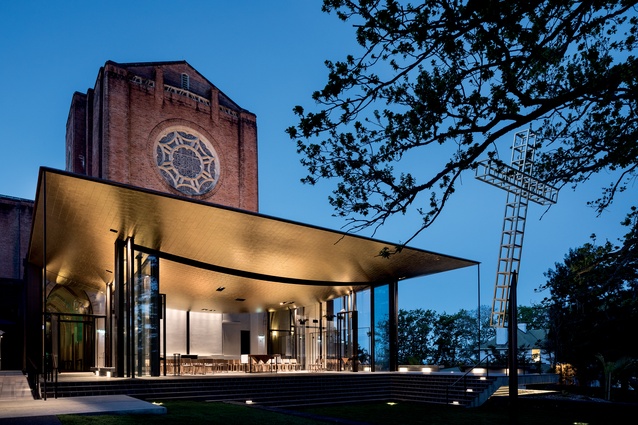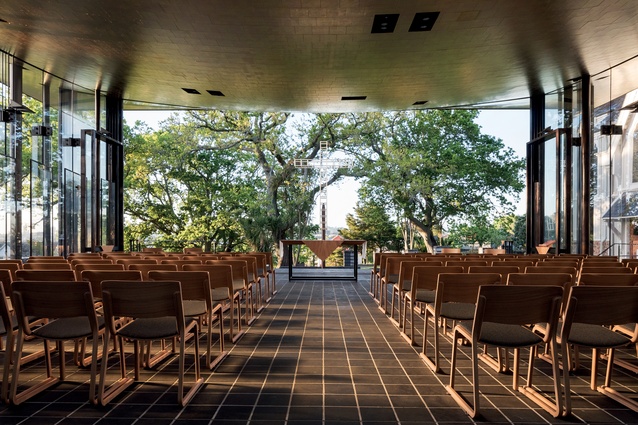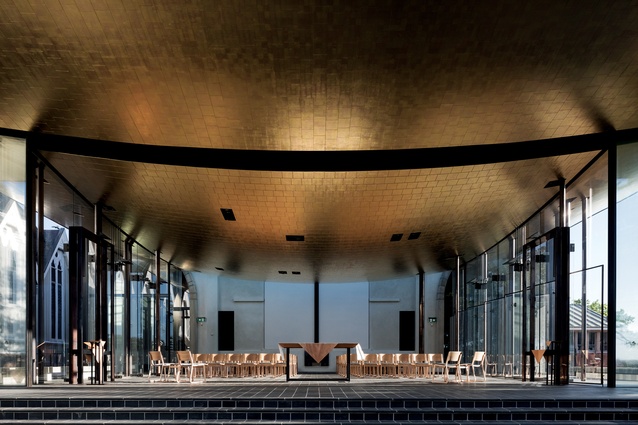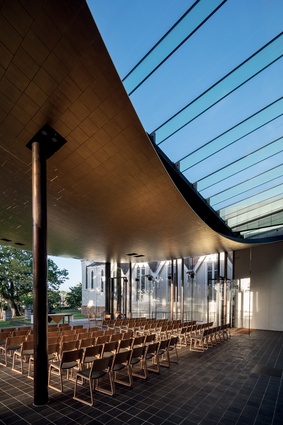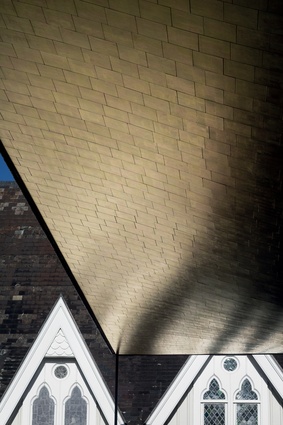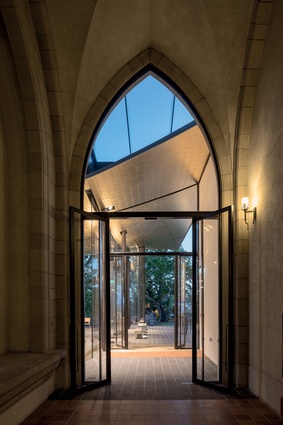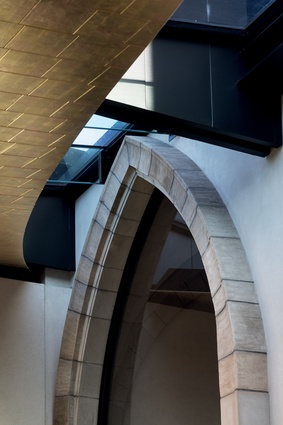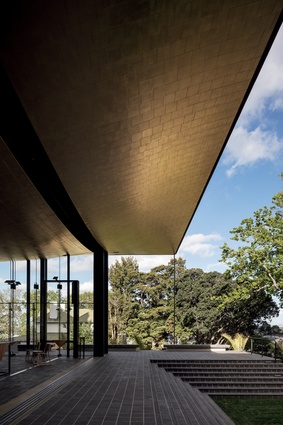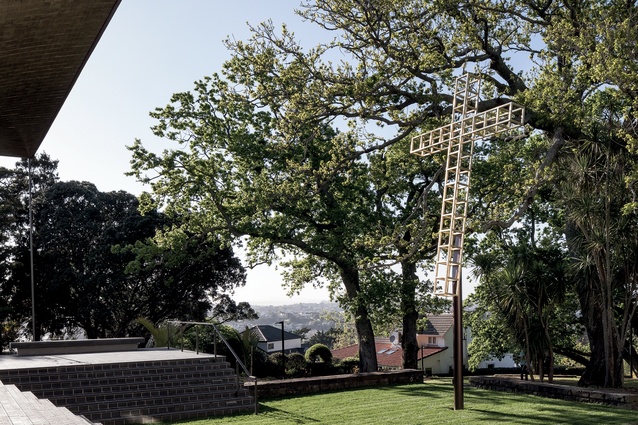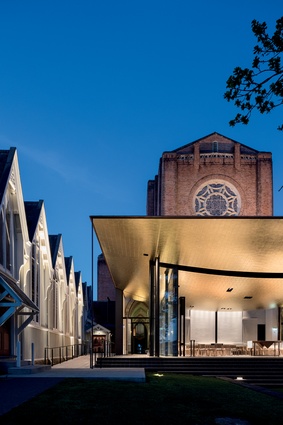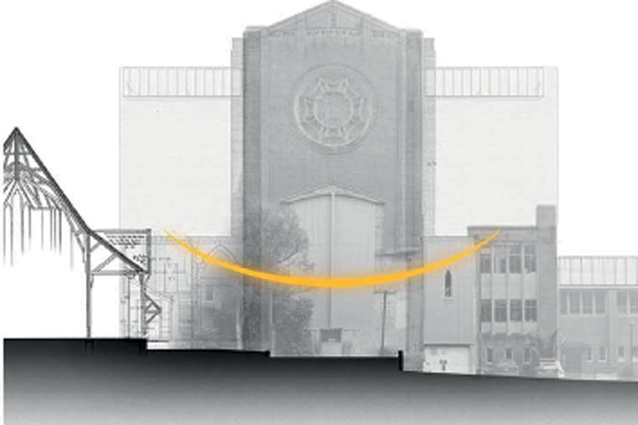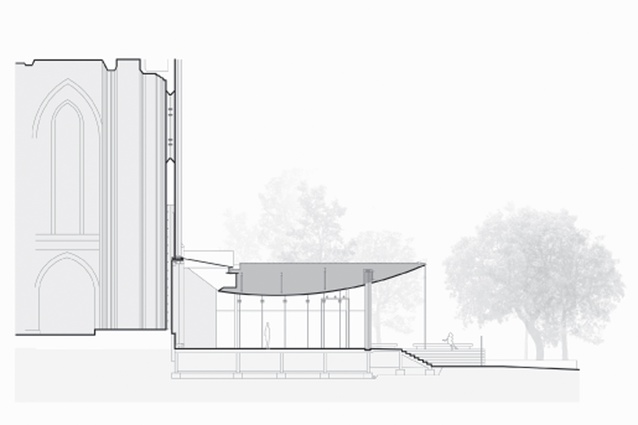Gold sanctuary: Bishop Selwyn Chapel
On Sunday mornings, people put their faces up against the glass of the new Bishop Selwyn Chapel and peer in during services. “It’s as if they think we can’t see them,” laughs The Very Reverend Jo Kelly-Moore, who is currently ninth Dean of Holy Trinity Cathedral (and soon to relocate to England to become the next Archdeacon of Canterbury). “It’s quite a genius design that Fearon Hay Architects came up with,” she adds.
This new chapel in Parnell, Auckland, is probably also the most delightful, magical and poetic New Zealand building I’ve visited this year. However, some critics might argue that it required too large an investment – seemingly emphasised by its Italian gold-leaf ceiling – better spent on feeding the poor. But, I disagree because, frankly, individuals are building extravagant houses across the country: no questions asked.
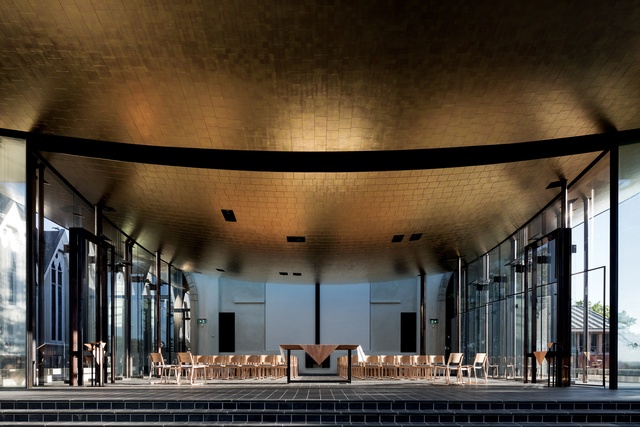
Here, this beautiful chapel will offer a sanctuary to the community and visitors for 100 years or more. Tens of thousands of people will inhabit this building as a celebratory space for christenings and weddings, a sacred place for funerals and consecration ceremonies, and a classy venue for a variety of events. It is an important investment for Auckland’s future: a vessel for people’s memories and history – and it’s beautiful.
The design is defined by a gleaming, gold, sweeping roof, which appears to levitate over a glass box; at the flick of a switch, a ‘wow’ moment is created when the glazed backdrop to the altar disappears and the space opens directly out to the garden beyond. The view is of a contemporary cross, designed by artist Neil Dawson, framed by two handsome old oak trees, which are themselves framing a view of Maungakiekie (One Tree Hill). Behind the cross is a columbarium and – rather less magical but in true Kiwi style – a car park.
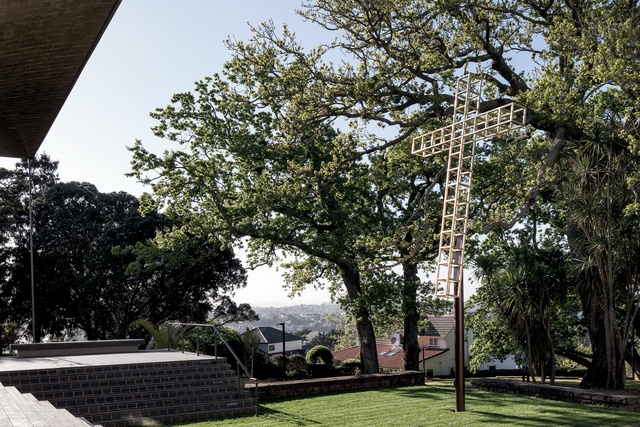
A trip to this site also offers visitors a New Zealand architectural history lesson. Over the years, the Anglican Diocese of Auckland has commissioned a number of influential architects to design a collection of iconic buildings here. Architect Benjamin Mountfort’s St Mary’s Church, completed in 1888, was described by Professor Andrew Barrie in his ‘Churches in Auckland’ guide for The Block, the NZIA’s broadsheet, as having a “distinctive jagged roofline and stunning stained-timber interior… regarded by many as the best example of wooden Gothic Revival architecture in the world”.
Charles Towle’s neo-Gothic design for the adjacent Holy Trinity Cathedral had a tricky start in life; the project was suspended in 1939, with both fund-raising and construction put on hold when World War II broke out. Towle’s ambitious competition design was scaled down, with only the first stage constructed between 1958 and 1973.
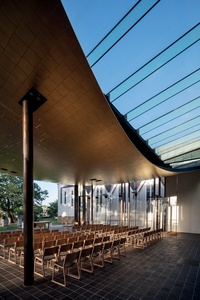
Later, between 1990 and 1995, as funds became available, Professor Richard (Dick) Toy added a wide-span nave to accommodate a congregation of around 1,100 people, incorporating the existing brick and reinforced concrete neo-Gothic chancel (the area near the altar which is reserved for clergy and choir). Toy’s striking design for the nave roof reflects that of St Mary’s Church and is renowned for its incorporation of modern stained glass, including a unique window featuring a Polynesian Christ with colourful Pacific motifs.
Former president of the New Zealand Institute of Architects (NZIA), John Sinclair, supervised the building of the nave as well as designing the Bishop Monteith Visitors’ Centre, which is attached to the north-eastern corner of the cathedral. He also suggested running an architectural design competition for the Bishop Selwyn Chapel, to be run through the NZIA. The competition received 17 expressions of interest, which were whittled down to a short list of four.
The review process was led by another former NZIA president, David Sheppard. “Each of the four finalists was extraordinary in their own right,” states Kelly-Moore. “They really challenged us to think about ‘what is this building going to say, what does it need to achieve and how does it need to operate at a very practical level?’”
A chapel had been intended for the site for decades but prevented in the past because of budgetary constraints. According to Kelly-Moore, “Charles Towle actually left the imprint of what it should look like on the back wall of the cathedral and, as in any cathedral around the world, the ambulatories that go down the side of the chancel and behind the high altar usually lead to a chapel or multiple chapels of some description.” It was also a fitting time to finish the precinct because the cathedral’s 60th anniversary – and final completion – will be celebrated with a consecration blessing next year.
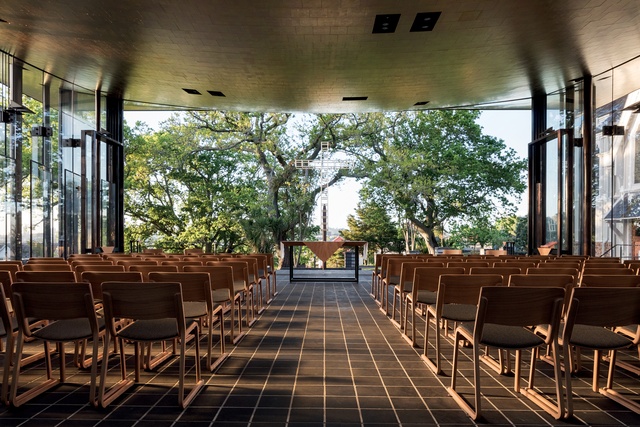
“In the grand scheme of cathedral building, that’s not bad going, especially when you consider the Sagrada Familia in Barcelona was finished centuries later,” she jokes. The building of the chapel eventually came about due to a failing church organ in the cathedral. “Organs are vulnerable to damage caused by vibration and dust, so you wouldn’t install a brand-new organ and then create a lot of builder’s dust,” she explains. “We were told, ‘Now is the time to do work around your precinct’ before the organ installers arrive from England.” There was a two-year window until they arrived: time enough to build a chapel.
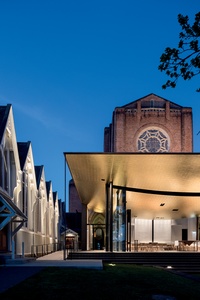
Fearon Hay Architects’ design sought to “complete the journey (or procession) from north to south on the site; from the front of the cathedral through to the columbarium and the maunga,” explains architect Jeff Fearon. “We wanted to create a sense of movement and looseness and for the chapel to have a strong presence – a sense of visual permeability.” The sweeping roof rises up at the edges to take in the landscape, which Kelly-Moore describes as “calling you out beyond its walls… like a symbol for love eternal”.
Inside, an intimate space accommodates up to 120 people but with flexibility to remove the chairs or set them up in various configurations as needed. While the interior is minimalist in design, Fearon says, “We created future opportunities to layer the space with artwork and weaving”.
Other key considerations were to increase accessibility by smoothing out the levels between the buildings, while glazed acoustic fins line the sides, ensuring great sound quality and maintaining transparency to the sides of ‘the box’. In reference to the glazing and mullions, open frames were designed to house the audio and AV technology and, again, to maintain the ‘simple’ aesthetic of the interior.
One of my favourite architectural devices is the top-lit, elliptical wedge of glazing over the circulation route along the back wall of the chapel. When you look up, you see the rose window of the Holy Trinity Cathedral. It’s all wonderfully considered and detailed.
Kelly-Moore says, “Our understanding of church today is very much reflected in Fearon Hay’s architecture. The whole point is ‘the doors are open, come any time’. The genius in this is that the whole wall opens but, not only are the doors open, they disappear. That’s amazing… As you can tell, we’re rather chuffed!”

